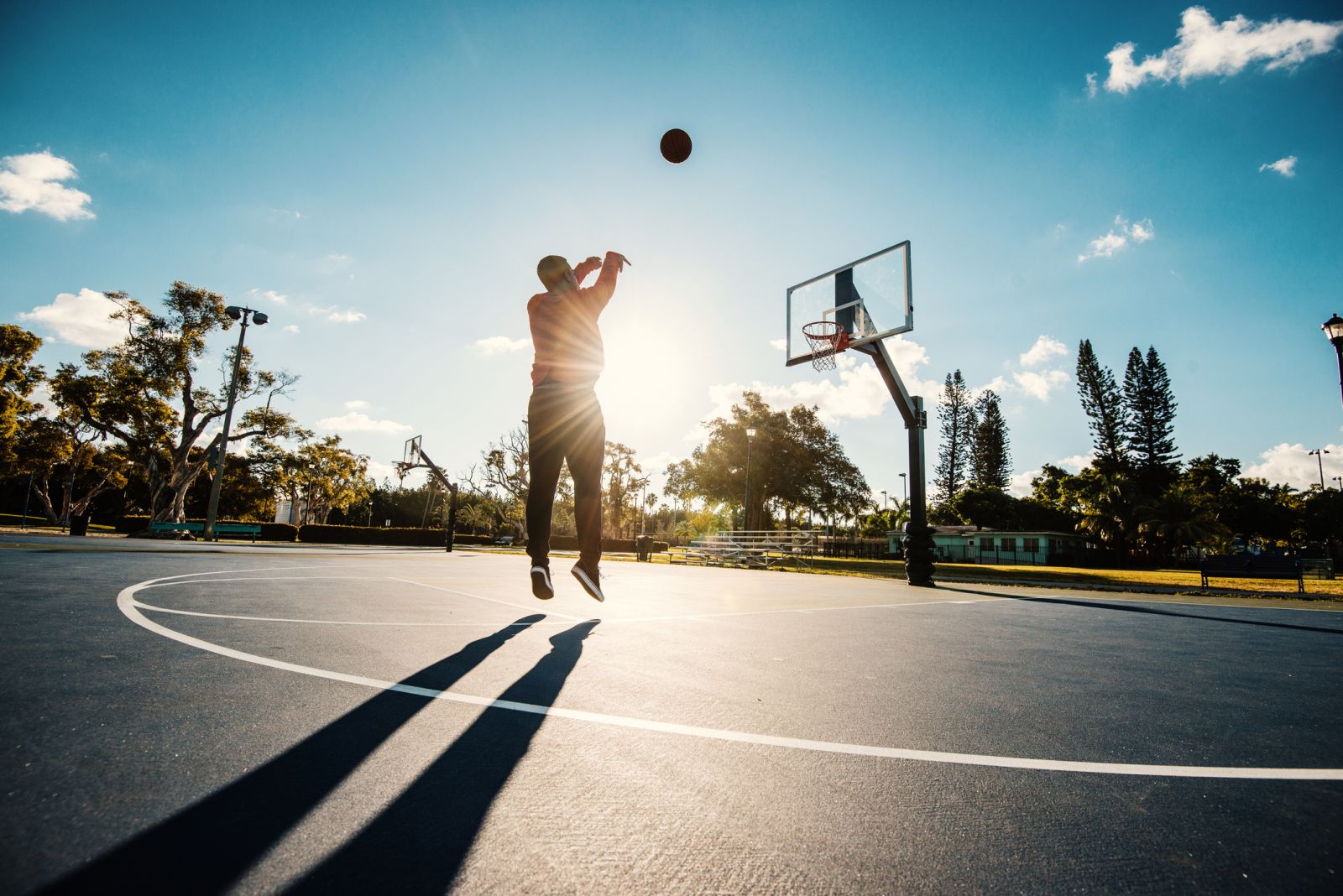Basketball Injuries & Prevention
Common Basketball Injuries

According to the US Consumer Product Safety Commission, more than 501,000 basketball-related injuries were treated in hospital emergency rooms in 2009.
The fast-paced action of basketball can cause a wide range of injuries, most often to the foot, ankle, and knee. Sprained ankles and knee ligament tears are common. Basketball players are also at risk for jammed fingers and stress fractures in the foot and lower leg.
Several strategies can help to prevent basketball injuries — from careful inspection of the play area to using proper passing techniques.
Proper Preparation for Play
- Maintain fitness. Be sure you are in good physical condition at the start of basketball season. During the off-season, stick to a balanced fitness program that incorporates aerobic exercise, strength training, and flexibility. If you are out of shape at the start of the season, gradually increase your activity level and slowly build back up to a higher fitness level.
- Warm up and stretch. Always take time to warm up and stretch. Research studies have shown that cold muscles are more prone to injury. Warm up with jumping jacks, stationary cycling or running or walking in place for 3 to 5 minutes. Then slowly and gently stretch, holding each stretch for 30 seconds.
- Hydrate. Even mild levels of dehydration can hurt athletic performance. If you have not had enough fluids, your body will not be able to effectively cool itself through sweat and evaporation. A general recommendation is to drink 24 ounces of non-caffeinated fluid 2 hours before exercise. Drinking an additional 8 ounces of water or sports drink right before exercise is also helpful. While you are exercising, break for an 8 oz. cup of water every 20 minutes.
Focus on Technique
- Play only your position and know where other players are on the court to reduce the chance of collisions.
- Do not hold, block, push, charge, or trip opponents.
- Use proper techniques for passing and scoring.
- Do not forget sportsmanship.
- Ensure Appropriate Equipment
- Select basketball shoes that fit snugly, offer support, and are non-skid.
- Ankle supports can reduce the incidence of ankle sprains.
- Protective knee and elbow pads will protect you from bruises and abrasions.
- Use a mouth guard to protect your teeth and mouth.
- If you wear glasses, use safety glasses or glass guards to protect your eyes.
- Do not wear jewelry or chew gum during practice or games.
- Ensure a Safe Environment
- Outdoor courts should be free of rocks, holes, and other hazards. Inside courts should be clean, free of debris, and have good traction.
- When playing outside, environmental conditions must be considered. Players should avoid playing in extreme weather or on courts that are not properly lighted in the evening.
- Baskets and boundary lines should not be too close to walls, bleachers, water fountains, or other structures. Basket goal posts, as well as the walls behind them, should be padded.
What Are The Treatment Options For Basketball Injuries?
- Coaches should be knowledgeable about first aid and be able to administer it for minor injuries, such as facial cuts, bruises, or minor strains and sprains.
- Be prepared for emergencies. All coaches should have a plan to reach medical personnel for help with more significant injuries such as concussions, dislocations, contusions, sprains, abrasions, and fractures.
Safe Return to Play
An injured player’s symptoms must be completely gone before returning to play.
For example:
- In case of a joint problem, the player must have no pain, no swelling, full range of motion, and normal strength.
- In case of concussion, the player must have no symptoms at rest or with exercise, and should be cleared by the appropriate medical provider.
Prevent Overuse Injuries
- Because many young athletes are focusing on just one sport and are training year-round, doctors are seeing an increase in overuse injuries. The American Academy of Orthopaedic Surgeons has partnered with STOP Sports Injuries to help educate parents, coaches, and athletes about how to prevent overuse injuries.
Specific tips to prevent overuse injuries include:
- Limit the number of teams in which your child is playing in one season. Kids who play on more than one team are especially at risk for overuse injuries.
- Do not allow your child to play one sport year round — taking regular breaks and playing other sports is essential to skill development and injury prevention.
Our team is here for you
We offer the best, least invasive and least aggressive options to relieve your pain and symptoms so you can get back to the life you love. Atlantic Orthopaedic Specialists Sports Medicine Care Center has convenient locations in Virginia Beach, Norfolk and Chesapeake.




